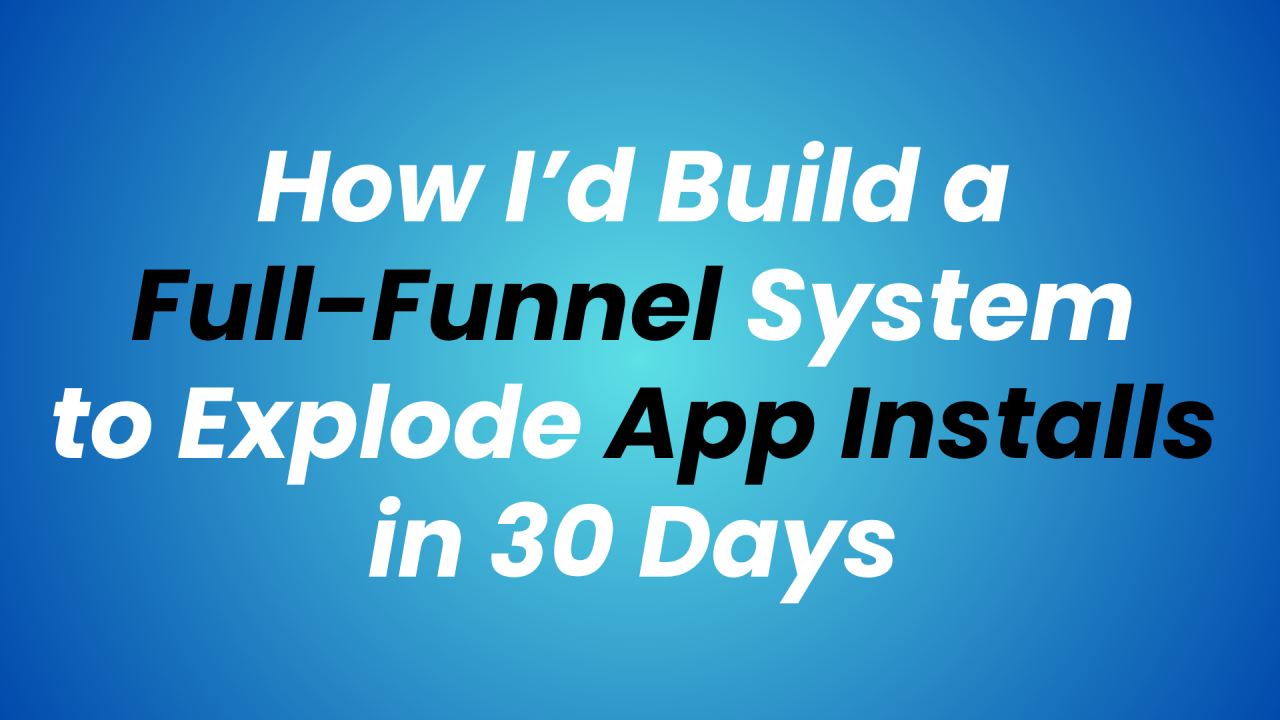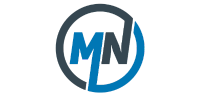Blog Details
The 30-Day Funnel Strategy I’d Use to Grow Any App

Let’s get straight to it.
Most app marketing plans fail—not because the product is bad, but because the strategy is incomplete.
You get some visuals. Maybe a reel or two. Run a boosted post. Then hope for the best. But that’s not marketing. That’s guessing.
If I were in charge of growing your app in 30 days—with full accountability for results—this is the strategy I’d use.
No fluff. Just pure funnel logic, conversion tracking, and creative execution.
My Core Objective: Downloads First, Brand Later
Here’s how I prioritize:
- I don’t chase likes.
- I don’t chase vanity impressions.
- I chase installs—and I build everything around that.
Yes, branding matters. But if no one downloads your app, branding won’t save you.
That’s why I design content, tracking, and ads around a single objective:
Turning strangers into app users—fast.
Step 1: Build a Real Funnel (Not Just a Feed)
When people say “we’re posting content regularly,” what they usually mean is: “We’re uploading and praying someone downloads.”
That’s not a funnel. A proper funnel has stages—and each stage has its own goal, message, and format.Here’s the structure I follow:

Each week focuses on one of these stages, ensuring every person in the journey sees the right message at the right time.
Step 2: Track Everything Like a Pro
Before I spend $1 on ads, I make sure every install is trackable.
That means:
Meta Pixel Setup
Standard events I trigger:
- PageView
- ViewContent
- AppInstall (primary goal)
- AddToCart (optional if web elements are part of the flow)
Server-Side Tracking (CAPI)
I set up Meta Conversion API via:
- Google Tag Manager (GTM)
- Meta’s CAPI Gateway
- Or direct server-side integration
Why it matters: CAPI captures data even when browser cookies fail. It keeps your tracking alive across iOS updates and privacy changes.
API-Based Conversion Events
Install events are tied to:
- Deep links (app-to-app)
- Event-based tracking via query strings
- Real-time validation inside Events Manager
I also test weekly to ensure event firing is accurate. Broken events = broken reporting = wasted ad dollars.
Step 3: Weekly Breakdown — What I Actually Post
Each week has its own creative mission. Here’s the content rollout I recommend:
Week 1: Awareness
Goal: Reach as many mobile users as possible Content:
- Reel: Before vs After FirstDex (show the pain, then the solution)
- Graphic 1: Brand/story intro
- Graphic 2: Pain point users face
- Graphic 3: Your bold mission/USP Ads:
- Objective: Video Views / Reach
- Audience: Mobile users 18–45, broad interest-based
Week 2: Interest
Goal: Build curiosity and explain how it works Content:
- Reel: “Top 3 reasons to try the app”
- Graphic 4: Feature highlight
- Graphic 5: Carousel walkthrough of app screens
- Graphic 6: Visual flow: how it works Ads:
- Objective: Website Traffic
- Audience: People who viewed videos or saved posts in Week 1
Week 3: Consideration
Goal: Build trust using social proof Content:
- Reel: Real user testimonial or animation
- Graphic 7: Quote from a happy user
- Graphic 8: Case study or user journey
- Graphic 9: Address FAQs / common doubts Ads:
- Objective: Retarget video viewers + web visitors
- Audience: Custom audience (engaged users)
Week 4: Conversion
Goal: Push for installs Content:
- Reel: Step-by-step install + quick use tutorial
- Graphic 10: Countdown or launch urgency
- Graphic 11: Side-by-side competitor comparison
- Graphic 12: “Why wait?” CTA
- Graphic 13: Install guide visual
- Graphic 14: Thank you / community shoutout
- Graphic 15: Final post with download link Ads:
- Objective: App Installs (with CAPI enabled)
- Audience: Retargeting + Lookalike of installers
Suggested Budget Plan (Flexible by ROI)

This setup is fully scalable. If ROAS looks strong in Week 2 or 3, I recommend doubling Week 4’s budget to push installs hard.
Weekly Reporting & Monthly Optimization
Every Monday, I pull data on:
- Impressions
- Reach
- Video View %
- Cost per Click
- Cost per Install
- Engagement rate
By end of the month, I review:
- Top-performing creatives
- Funnel drop-off points
- CAPI event accuracy
- Ad set efficiency (by gender, age, device)
Then I update creatives or audiences to improve the next cycle.
Final Thoughts: Funnels > Feeds
If you want real app growth, forget “posting more.” That’s a hamster wheel.
You need structure. You need strategy. You need a funnel. And if you build it right the first time — with tracking and intent — you don’t just get more downloads. You get cheaper ones. Better ones. Loyal ones.
Let me know if you’d like help setting this up. I’m happy to walk you through it.
To Get Important Business
Ideas and Update
About Me
I’m Nurnobi Islam, a Top Meta Ads Specialist & Global PPC Consultant who’s spent over six years turning ad budgets into real growth. I’ve seen businesses pour money into campaigns that just don’t convert — and I knew there had to be a better way.
Contact Information
Copyright © Mr Nur 2025. All rights reserved.
